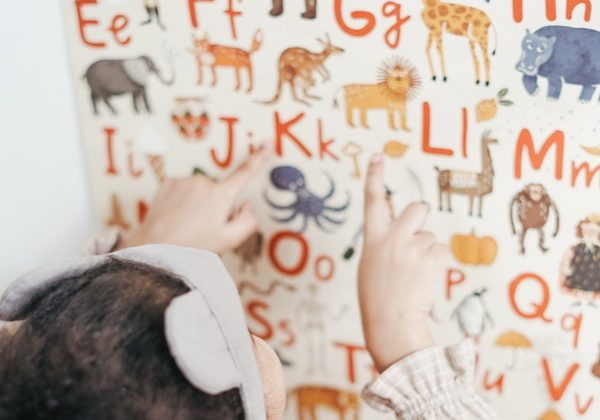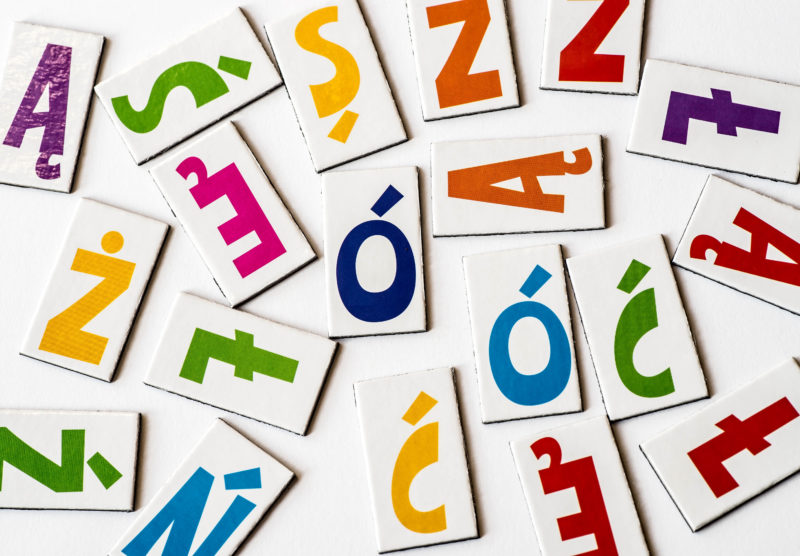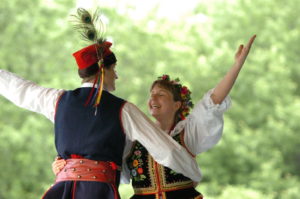Learn the Polish Alphabet Quickly
The first step of learning any language is learning its alphabet. That’s how you can master all the sounds of the language quickly. With Polish, you’ll definitely learn the alphabet quickly. Luckily, it’s not hard because Polish uses Latin letters, just like English. So, you have a head start there. But, there are some letters and digraphs in Polish that may be tricky. Here are all the letters of the Polish alphabet with a guide on how to pronounce them.
How Many Letters Are in the Polish Alphabet?
There are 32 letters in the Polish alphabet. While it’s based on the familiar Latin letters, some Polish letters have special variations. These signal a different sound, so you have to pay special attention to how you pronounce them. While it may seem daunting to learn all these letters at first, once you know them, you can speak Polish much more easily.
The Polish Alphabet
Here are all the letters of the Polish alphabet. Be mindful of the different accents on the letters, and the pronunciation differences between them. You can also see some handy Polish examples with English translations to see how the letters look in words.

Polish Alphabet Chart
Polish Letters |
Similar English sound |
Example |
A a |
like a in large |
aktualny (current) |
Ą ą |
nasal o (a bit like o in own) |
gorący (hot) |
B b |
like b in bed |
brzmieć (sound) |
C c |
like ts in pits |
cięcie (cut) |
Ć ć |
like ch |
mieć (have) |
D d |
like d in dog |
dom (house) |
E e |
like e in bed |
pies (dog) |
Ę ę |
nasal e |
język (language) |
F f |
like f in fingers |
fortepian (piano) |
G g |
like g in go |
garnek (pot) |
H h |
like h in hammer |
historia (story) |
I i |
like ee in meet |
ikra (roe) |
J j |
like y in yes |
jajko (egg) |
K k |
like k in king |
kot (cat) |
L l |
like l in light |
ludzie (people) |
Ł ł |
like w in will |
igła (needle) |
M m |
like m in mother |
mama (mother) |
N n |
like n in not |
noc (night) |
Ń ń |
like ny in canyon |
koń (horse) |
O o |
like o in long |
oko (eye) |
Ó ó |
like oo in wood |
góra (top) |
P p |
like p in people |
portki (trousers) |
R r |
like the Spanish rolled r |
roślin (plant) |
S s |
like s in sound |
syty (full) |
Ś ś |
like sh in sheep, but softer |
ślimak (snail) |
T t |
like t in stop |
tata (father) |
U u |
like oo in wood |
ulica (street) |
W w |
like v in vow |
woda (water) |
Y y |
like i in bit (very short) |
myjka (washer) |
Z z |
like z in zoo |
zebra (zebra) |
Ź ź |
somewhat like si in vision, but softer |
źrebak (colt) |
Ż ż |
like si in vision |
żebro (rib) |
Special Polish Digraphs and Trigraphs
Apart from the 32 letters of the alphabet, Polish also has digraphs and trigraphs. These are letter combinations that show one particular sound. Almost all the time you see these letter combinations, you need to associate them with the following sounds.
Polish Digraphs and Trigraphs |
Similar English sound |
Example |
ch |
ch’ as in the Scottish loch |
suche (dry) |
ci |
‘ch’ as in cheek |
ciepło (heat) |
cz |
‘ch’ as in chalk |
czekać (wait) |
dz |
‘ds’ as in goods |
pieniądze (money) |
dzi |
‘du’ as in duke |
tydzień (week) |
dź |
‘du’ as in duke |
niedźwiedź (bear) |
dż |
‘j’ as in job |
dżul (July) |
ni |
‘n’ as in onion |
średniej (middle) |
rz |
‘s’ as in treasure |
korzeń (root) |
si |
‘sh’ as in sheep |
siedem (seven) |
sz |
‘sh’ as in shark |
proszę (please) |
szcz |
shch’ as in chair |
tłuszcz (fat) |
zi |
g’ as in Niger |
poziom (level) |
Pronouncing Polish Letters
Although most pronunciations of Polish letters are fairly straightforward, there are a few that are different. If your native language is English, you need to pay attention to these letters of the Polish alphabet when you’re speaking Polish:
- ą is pronounced as [o] before l or ł. But, with other consonants, it’s pronounced as [ɔn], [ɔŋ] or [ɔm]. (dąb [dɔm] – oak).
- ę is pronounced as [e] before l or ł. But, with other consonants, it’s pronounced as [ɛn], [ɛŋ] or [ɛm]. (tęcza [ɛn] – rainbow)
- i isn’t pronounced in ci, dzi, ni, si and zi when there’s another vowel after it. (dziewięć – nine)
- u: in loanwords, “u” is pronounced like “w” sometimes. (auto [awtɔ] – car)
- Voiced consonants: sometimes they become unvoiced at the end of words or in clusters.
- Unvoiced consonants: sometimes they become voiced in a cluster. (przyjazd – arrive)
- Q, V, and X aren’t part of Polish words. However, you may find them in foreign names and loanwords occasionally.
How to Learn the Polish Alphabet
Now you know all the intricacies of the Polish alphabet. But, you also have to remember it. Knowing these letters and their pronunciation by heart is crucial to speak Polish fluently. So, to help you master the Polish alphabet, here are a few studying tricks you can use. These will help you learn the Polish alphabet faster, and ensure that you remember this lesson forever.
- Use Spaced Repetition: This is the trick you need to use to remember your lessons for longer. Spaced repetition is easy to do, and the benefits are invaluable. All you have to do is repeat your lessons often. After a few days, come back again to review the Polish alphabet. The more you review, the more likely it is that you’ll remember it.
- Think of Mnemonics: There are some examples next to the alphabet in the table above. Associating these polish words to the letters and the sounds of the alphabet can help you remember them better. As a bonus, it’s also a great way to enhance your vocabulary.
- Sing Songs: You need to speak the language if you want to achieve fluency. Without practice, you’ll never master the Polish alphabet. Luckily, ABC songs are a great tool to use. If the melody gets stuck in your head, you naturally enforce spaced repetition. So, if you want to be fluent, feel free to sing the Polish alphabet song.
Learn Polish with the Best App
Of course, learning the alphabet is only the first step of learning Polish. A very exciting journey awaits you. And by the end, you’ll speak Polish fluently and comfortably. But, how you get there, matters. You need to have fun with Polish and progress to fluency constantly. So, if you want to learn Polish in the most effective and fun way, you need to download OptiLingo.
OptiLingo is the app that gives you the most useful Polish words and phrases. So, you learn exactly how the locals speak. This app also makes you speak the language. It builds your Polish confidence, so when the time comes, you can speak the language effortlessly. Discover the secrets of Polish fluency when you download OptiLingo!








